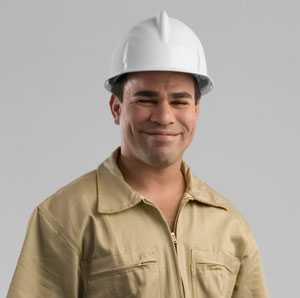Musculoskeletal Health Program

Program Description
The NIOSH Musculoskeletal Health Cross-Sector Program’s mission is to reduce the burden of work-related MSDs through research and prevention that protects workers from MSDs, helps management mitigate related risks and liabilities, and helps practitioners improve the efficacy of workplace interventions. Members of the Program recognize the growing need for affordable interventions that promote musculoskeletal health in the workplace. NIOSH researchers involved with musculoskeletal health are experts on ergonomics; i.e. the science of fitting workplace conditions and job demands to the capabilities of the working population. This means they assess physical and social components of work environments (such as conveyer belt height and lunch break routines, respectively) and come up with ways to modify these environments that improve the health and safety of workers; in this case by reducing the incidence rate and severity of work-related MSDs.
High risk occupations for MSDs:
- Registered nurses
- Licensed practical and licensed vocational nurses
- Nursing assistants
- Emergency medical technicians and paramedics
- Assemblers and fabricators
- Food preparation workers
- Truck drivers
- Laborers and freight, stock, and material handlers
- Light truck or delivery service drivers
- Bus drivers, transit, and inner city drivers
- Farmworkers and laborers
- Crop, nursery and greenhouse workers
- Industrial truck and tractor operators
- Firefighters
- Police and sheriff patrol officers
- Correctional officers and jailers
- Stock clerks and order fillers
- Cashiers
- Customer service representatives
MSDs are most often caused by overexertion and can affect a worker’s ability to perform many job-related tasks, such as lifting, pulling, pushing, maintaining a natural posture, withstanding cold temperature, and withstanding torque reactions and vibrations from machinery and tools.
High-risk industries for MSDs include:
- Healthcare and social assistance
- Manufacturing
- Transportation and warehousing
- Agriculture, forestry and fishing
- Public safety
- Wholesale and retail trade
Registered nurses, licensed practical and licensed vocational nurses, and nursing assistants are at high risk of developing neck, shoulder, and back pain from lifting and handling patients. Assemblers and fabricators, especially those that work with small parts, are at risk of overexerting the muscles in their hands that are responsible for fine motor control. Firefighters, police, sheriff patrol officers, correctional officers and jailers are at high risk of developing sprained, strained, and torn muscles because the physical demands of their work often changes at a moment’s notice.
The NIOSH Musculoskeletal Health Cross-Sector Program is particularly sensitive to the needs of the Hispanic and Latino community. Minority groups are less likely to report work-related injuries, and Latino immigrants comprise roughly 7% of the United States workforce. Particularly high-risk worker populations include older workers, immigrant workers, minority workers, and low-wage workers. Older workers are more susceptible to developing MSDs and need more time away from work to recover from them than younger workers. Immigrant, minority, and low-wage workers are less likely to report MSDs to management because they are often afraid of discrimination; being dismissed, losing hours, or having to pay for rehabilitation on their own. There is also often a language barrier that prevents these worker populations from reporting MSDs. These specific groups are important to consider when developing intervention strategies for MSDs because they comprise a growing percentage of the US workforce. The Program plans to develop tools and resources for Hispanic small business owners on work-related MSD prevention strategies.
- Page last reviewed: November 7, 2016
- Page last updated: November 7, 2016
- Content source:


 ShareCompartir
ShareCompartir